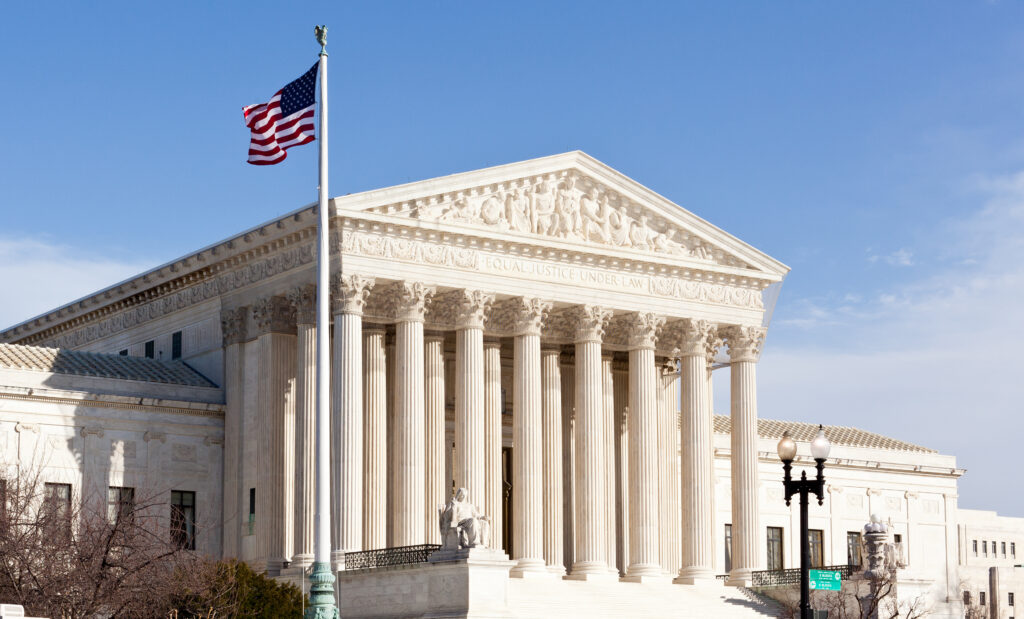Mississippi Launches Challenge to Roe v. Wade
In March 2018 the Governor of Mississippi signed a law banning elective abortions at 15 weeks of pregnancy and beyond.
The U.S. Supreme Court has ruled that states may not ban abortion before the unborn child reaches “viability”, i.e., before the child can potentially survive outside the womb, albeit with what the Court called “artificial aid.” Although the pre-viable period continues to shorten with advances in technology, viability will occur after 22 weeks of gestation in the very large percentage of cases.
This means that the 15-week ban enacted by Mississippi represents a direct challenge to a core Supreme Court abortion rule.
By launching this challenge, Mississippi provides a valuable opportunity for the Supreme Court to reconsider and potentially alter the viability rule to allow greater protections for unborn human life.
The Viability Rule
The viability rule provides that government may not prohibit abortion before viability. The U.S. Supreme Court created the viability rule in the 1973 Roe v. Wade decision and reaffirmed it in the 1992 Planned Parenthood v. Casey decision. Although the pre-viable period continues to shorten with advances in technology, viability will occur after 22 weeks of gestation in the very large percentage of cases.
There is no denying that, in the landmark 1992 Casey case, the Court purported to reaffirm the viability rule. The Court stated that “no changes of fact have rendered viability more or less appropriate as the point at which the balance of interests tips.” Further, a joint opinion in Casey authored by Justice Kennedy and two other justices described Roe as “a reasoned statement, elaborated with great care,” described the viability rule as the “most central principle” of Roe and a “rule of law” and “component of liberty” that “we cannot renounce,” and stated that “there is no line other than viability which is more workable.”
However, the Casey Court explained that it was affirming Roe’s central holding “with whatever degree of personal reluctance any of us may have.” Furthermore, the joint opinion authored by Justice Kennedy and two other justices admitted that the issue of viability was “not before us in the first instance.” The joint opinion explained that “[w]e do not need to say whether each of us, had we been Members of the Court when the valuation of the state interest [in the protection of potential life] came before it as an original matter, would have concluded, as the Roe Court did, that its weight is insufficient to justify a ban on abortions prior to viability even when it is subject to certain exceptions.”
Fifteen years later, in the 2007 Gonzales v. Carhart partial-birth abortion case, Justice Kennedy wrote a majority opinion for the Court that applied the Casey standards. However, as University of Georgia Law Professor Randy Beck has explained (citations available here), Justice Kennedy’s opinion in Gonzales “introduced Casey’s standards with the statement ‘[w]e assume the following principles for the purposes of this opinion,’ as if the majority was saving for another day the question of whether the Casey plurality opinion should continue to control.” Professor Beck has published academic articles discussing the viability rule. He goes on to explain that “Justice Kennedy’s opinion [in Gonzales] later referenced ‘the principles accepted as controlling here,’ reinforcing the impression that the majority might not be fully committed to Casey as a final statement of the Court’s position on abortion rights.” Further, Justice Kennedy’s opinion in Gonzales, following his dissent in an earlier partial-birth abortion ban case called Stenberg v. Carhart, highlighted the gruesome and horrific nature of late abortion.
Any doubts Justice Kennedy or other current members of the Court might have about the viability rule would be well placed. As I have previously argued, the viability rule is extremely flawed. It cannot be justified, especially as applied to late abortion bans.
Mississippi 15-Week Ban Challenges the Viability Rule
On March 19, 2018 Mississippi Governor Phil Bryant signed Mississippi House Bill 1510 into law. HB 1510 is formally titled the “Gestational Age Act.”
HB 1510 directly challenges the viability rule by banning elective abortion at 15 weeks of pregnancy. Section 1(4)(b) of the Act states, “Except in a medical emergency or in the case of a severe fetal abnormality, a person shall not intentionally or knowingly perform, induce, or attempt to perform or induce an abortion of an unborn human being if the probable gestational age of the unborn human being has been determined to be greater than fifteen (15) weeks.”
The terms “medical emergency,” “severe fetal abnormality,” and “probable gestational age” are defined, respectively, in subsections (j), (h), and (f) of Section 1(3) of the Act. “‘Gestational age’ or ‘probable gestation age’ means the age of an unborn human being as calculated from the first day of the last menstrual period of the pregnant woman.”
In enacting HB 1510 the Legislature made several findings of fact. In its first finding the Legislature states, “The United States is one (1) of only seven (7) nations in the world that permits nontherapeutic or elective abortion-on-demand after the twentieth week of gestation.” Although HB 1510 does not cite the Charlotte Lozier institute, this finding of fact is identical to the finding of fact set forth in a paper published by Lozier under the title “Gestational Limits on Abortion in the United States Compared to International Norms.”
Other findings of fact set out in HB 1510 include
- “[F]ully seventy-five percent (75%) of all nations do not permit abortion after twelve (12) weeks’ gestation, except (in most instances) to save the life and to preserve the physical health of the mother.”
- “Between five (5) and six (6) weeks’ gestation, an unborn human being’s heart begins beating.”
- “An unborn human being begins to move about in the womb at approximately eight (8) weeks’ gestation.”
- “At nine (9) weeks’ gestation, all basic physiological functions are present. Teeth and eyes are present, as well as external genitalia.”
- “An unborn human being’s vital organs begin to function at ten (10) weeks’ gestation. Hair, fingernails, and toenails also begin to form.”
- “At eleven (11) weeks’ gestation, an unborn human being’s diaphragm is developing, and he or she may even hiccup. He or she is beginning to move about freely in the womb.”
- “At twelve (12) weeks’ gestation, an unborn human being can open and close his or her fingers, starts to make sucking motions, and senses stimulation from the world outside the womb. Importantly, he or she has taken on “the human form” in all relevant aspects” (quoting from the 2007 Gonzales v. Carhart ruling).
HB 1510 goes on to find that
- “The majority of abortion procedures performed after fifteen (15) weeks’ gestation are dilation and evacuation procedures which involve the use of surgical instruments to crush and tear the unborn child apart before removing the pieces of the dead child from the womb.”
- “[T]he intentional commitment of such acts for nontherapeutic or elective reasons is a barbaric practice, dangerous for the maternal patient, and demeaning to the medical profession.”
- “Abortion carries significant physical and psychological risks to the maternal patient, and these physical and psychological risks increase with gestational age.”
- “[I]n abortions performed after eight (8) weeks’ gestation, the relative physical and psychological risks escalate exponentially as gestational age increases.”
- “[A]s the second trimester progresses, in the vast majority of uncomplicated pregnancies, the maternal health risks of undergoing an abortion are greater than the risks of carrying a pregnancy to term.”
- “Medical complications from dilation and evacuation abortions include, but are not limited to: pelvic infection; incomplete abortions (retained tissue); blood clots; heavy bleeding or hemorrhage; laceration, tear, or other injury to the cervix; puncture, laceration, tear, or other injury to the uterus; injury to the bowel or bladder; depression; anxiety; substance abuse; and other emotional or psychological problems.”
- “[I]n abortions performed after fifteen (15) weeks’ gestation, there is a higher risk of requiring a hysterectomy, other reparative surgery, or blood transfusion.”
HB 1510 cites two Supreme Court precedents acknowledging the interests of states in protecting unborn human life and the health of women. As set forth in HB 1510,
- “The Supreme Court has long recognized that the State of Mississippi has an ‘important and legitimate interest in protecting the potentiality of human life,’ Roe v. Wade, 410 U.S. 113, 162 (1973), and specifically that ‘the state has an interest in protecting the life of the unborn.’ Planned Parenthood of Southeastern Pennsylvania v. Casey, 505 U.S. 833, 873 (1992).”
- And, “[t]he State of Mississippi also has ‘legitimate interests from the outset of pregnancy in protecting the health of women.’ Planned Parenthood of Southeastern Pennsylvania v. Casey, 505 U.S. 833, 847 (1992), as the ‘medical, emotional, and psychological consequences of abortion are serious and can be lasting.’ L. v. Matheson, 450 U.S. 398, 411 (1981).”
Abortion Industry Fights Back
On March 19, 2018, the same day that Governor Bryant signed HB 1510 into law, an abortion clinic and an abortion doctor filed a federal lawsuit challenging the 15‑week ban. The case is Jackson Women’s Health Clinic v. Currier, No. 3:18-cv-00171, in the U.S. District Court for the Southern District of Mississippi.
On March 20, the day after the case was filed, the court issued a temporary restraining order.
About three weeks later, on April 9, the plaintiffs filed an amended complaint. On top of the 15-week abortion ban, the amended complaint also challenges several other Mississippi pro-life policies including
- health and safety regulations governing abortion clinics,
- informed consent laws,
- a law providing that only a licensed physician can perform an abortion,
- and a ban on the practice of telemedicine abortion.
The original complaint included nine pages and 41 enumerated paragraphs plus the prayer for relief. The amended complaint grew to 56 pages and 161 enumerated paragraphs plus the prayer for relief.
In an April 11 order, the court split the case into two trials, one regarding the 15-week ban and one regarding the remaining issues.
Next Steps
The district court has scheduled a preliminary injunction hearing on the 15-week ban for September 24, 2018.
If the district court rules against the Mississippi 15-week ban, then the case would go to the U.S. Court of Appeals for the Fifth Circuit. After the Fifth Circuit, the next stop would be the U.S. Supreme Court.
Thomas M. Messner, J.D., is a senior fellow in legal policy at the Charlotte Lozier Institute.






















